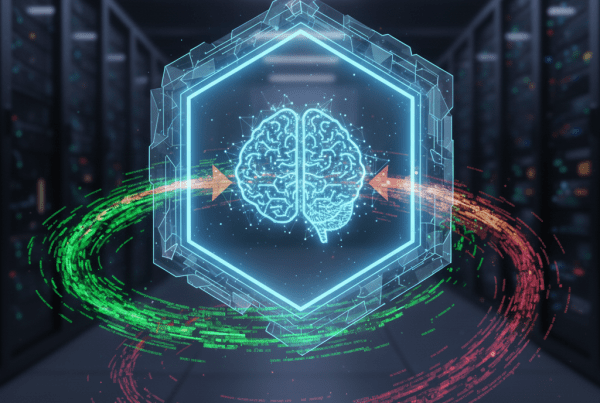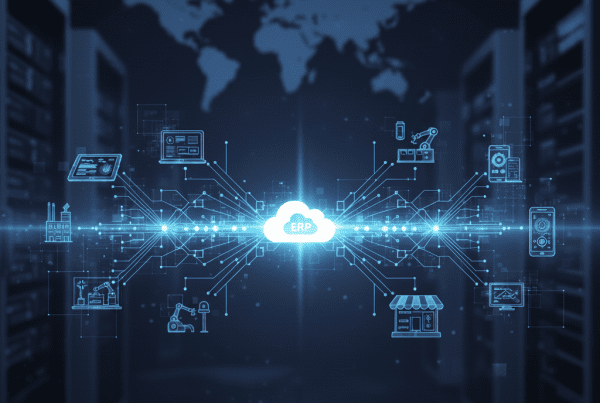The Human Resources department is a key driver of an organization’s success and efficiency. However, the role of HR extends beyond recruitment and training; it’s about creating experiences that foster growth and engagement. The new hire onboarding process is the first step in shaping the culture and setting the tone for an employee’s tenure. Manually managing every step of the onboarding process can be time-consuming and disorganized, making it a heavy lift for the HR team.
In this blog, we’ll explore how automation can create a new level of efficiency and personalization in this complex aspect of HR. The focus on automation is not just about reducing paperwork but about transforming employee onboarding from a series of administrative tasks to a personalized welcome into the organization.

What Employee Onboarding Looks Like
Research has consistently shown that a well-structured onboarding program can lead to higher retention rates, increased employee engagement, and even improved performance levels. However, with manual onboarding processes, the initial task list can be daunting for both HR teams and new employees.
Generally, an onboarding program includes a range of activities, from the completion of paperwork and distribution of company policies to assigning the employee their job responsibilities. While each step is critical, manual processes often lead to inefficiencies and can diminish employee excitement, all during a time that should be used to establish a positive first impression.
Transitioning from Manual to Automated Onboarding
When compared to traditional pen-and-paper methods, automated systems present clear advantages. Not only do they eliminate paperwork and the need for physical storage, but they also provide a dynamic platform for personalization and engagement. HR software solutions, electronic signatures, and document management systems can replace piles of forms with a cohesive digital experience.
However, the transition to an automated system may not be easy for all organizations. It requires careful planning and a complete shift in mindset for the company. With automation, HR is provided with a burdenless experience as employee information can be uploaded and secured without manual intervention. The focus shifts to ensure new hires are provided with a personalized experience and a thoughtful welcome to the company.
4 Benefits of Automating the Onboarding Process
When organizations invest in automation platforms, the onboarding process becomes more consistent, offers increased visibility and tracking, and provides better personalization for new hires. Here’s a breakdown of all the benefits:
1. Increased Efficiency and Costs:
Automation closes the gap caused by outdated processes, leading to cost savings and faster completion times. These digital tools can ensure that paperwork is easily accessible and that there are no unnecessary hold-ups in the onboarding process.
2. Personalized Experience and Engagement:
Today’s workforce expects a certain level of technological proficiency and personalization. Automated systems can deliver a customized experience with welcome messages, personalized onboarding schedules, and self-service access to resources, fostering a more engaged employee from the get-go.
3. Better Compliance and Security:
Onboarding new hires often involves a significant amount of sensitive information. By automating these processes, HR can ensure that employee data is kept secure and that the organization remains compliant with data protection and workforce regulations.
4. Stronger Insights and Analytics:
Automated onboarding platforms provide data on the onboarding process and employee activity, which can be later used by HR teams to identify areas for improvement and make informed decisions.
Tools for Onboarding Automation
There are many resources available to help organizations take their first steps into automating the onboarding process. Here are a few examples:
- Electronic forms: An important first step in replacing physical paperwork is to integrate electronic forms into the onboarding process, making the completion and processing of documents a breeze.
- E-signatures: This is a modern strategy that not only speeds up documentation completion, but also has legal sanctity. E-signatures eliminate the need for employees to print and sign the document, while improving the scanning and approval process for HR professionals.
- Document management systems (DMS): With a secure environment for storage and retrieval, confidential information is only a click away when needed, but safely locked down when not.
- Human Resources Information System (HRIS): As a software solution designed to improve and automate various human resources functions, this system typically includes features like employee data management, payroll processing, benefits administration, time tracking, and recruitment and document management.
Balancing Security, Compliance, and Personalization in Automation
New hire onboarding automation doesn’t mean businesses are compromising on security or compliance. In fact, automation enhances these aspects by adding checks and balances to meet security and data protection standards. Plus with access controls, businesses can limit who can see what, meaning data breaches are far less likely with more digital storage. For companies with global operations, onboarding platforms can be configured to respect regional laws and regulations, ensuring that your hiring practices are in sync with statutory requirements.
Automation also enables a personalized onboarding experience. From welcome videos that introduce company culture to interactive timelines and role-specific training resources, new hires receive tailored support from day one. The HR teams play a key role in crafting the right messages and resources, blending technology with a human touch to create an onboarding journey that resonates with each employee.
Best Practices for Implementing Onboarding Automation
Transitioning to an automated onboarding system is a big step, but it doesn’t have to be overwhelming. Here are some best practices for a smooth implementation:
1. Assessment:
Start with a thorough assessment of your current onboarding process. Identify the pain points in your current strategy and the processes that can be easily automated.
2. Selection:
Once you know what needs to be automated, select the right tools to bring your vision to life. Look for platforms that offer the features you need and are easy to integrate with your existing systems.
3. Planning:
The transition stage can be challenging without the right plan. Lay out a clear game plan that identifies key stakeholders, training requirements for your team, and a detailed implementation schedule.
4. Pilot Runs:
This step is critical to ensure the automation tools you’re integrating are working properly and to identify any bottlenecks in the process. Before full-scale deployment, run several tests of your selected tools and workflows.
5. Communication:
It’s always important to keep your team and any affected parties in the loop about changes and, most importantly, about the benefits of automation. Remember, shifting from manual to automated workflows requires a change in mindset, so your team should be supportive and involved in this process.
6. Feedback Loops:
Like communication, regular and structured feedback from HR helps the organization make necessary tweaks to the new system.
7. Continuous Improvement:
Finally, view the switch to automation as an ongoing process. Continuously refine your onboarding workflows, update your technology, and never lose sight of the human element in the experience.
Final Words
The future of employee onboarding is exciting and lies between the combination of technology and personalization. For HR managers and business leaders, automation offers an opportunity to simplify the onboarding process, set roots for employee engagement, and lay the groundwork for long-term employee success. The shift to automation will be a challenging one, but the rewards will lead to a smoother administrative process and a stronger relationship with employees. When organizations embrace automation as a tool, they can create new hire experiences that make them feel valued from day one.
About Atlantic, Tomorrow’s Office
Atlantic is an award-winning office technology and IT solutions company providing Imaging Products, IT Support, Document Management, Cybersecurity and Managed Services to small and large companies in the New York City metropolitan area, and the Greater Philadelphia and Delaware Valley.
For the latest industry trends and technology insights visit ATO’s main Blog page.





